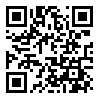year 9, Issue 35 (9-2010)
J. Med. Plants 2010, 9(35): 114-119 |
Back to browse issues page
Download citation:
BibTeX | RIS | EndNote | Medlars | ProCite | Reference Manager | RefWorks
Send citation to:



BibTeX | RIS | EndNote | Medlars | ProCite | Reference Manager | RefWorks
Send citation to:
Shahreari S, Khaki A, Ahmadi-Ashtiani H, Rezazadeh S, Hajiaghaei R. Effects of Danae racemosa on Testosterone Hormone in Experimental Diabetic Rats. J. Med. Plants 2010; 9 (35) :114-119
URL: http://jmp.ir/article-1-275-en.html
URL: http://jmp.ir/article-1-275-en.html
1- Department of Veterinary Pathology Islamic Azad University Yasooj Branch
2- Department of Veterinary Pathology Islamic Azad University Tabriz Branch ,arashkhaki@yahoo.com
3- Biochemistry and Nutrition Department of Zanjan University of Medical Sciences, Zanjan, Iran & Department of Clinical Biochemistry, School of Medical Science, Tarbiat-e-Modarres University
4- Institute of Medicinal Plants, ACECR
2- Department of Veterinary Pathology Islamic Azad University Tabriz Branch ,
3- Biochemistry and Nutrition Department of Zanjan University of Medical Sciences, Zanjan, Iran & Department of Clinical Biochemistry, School of Medical Science, Tarbiat-e-Modarres University
4- Institute of Medicinal Plants, ACECR
Abstract: (5481 Views)
Background: Danae racemosa is a strong antioxidant and antioxidants have significant effects on spermatogenesis, sperm biology and oxidative stress, and changes in antioxidant capacity are considered to be involved in the pathogenesis of chronic diabetes mellitus. Objective: Because STZ causes testicular dysfunction and degeneration under situations of experimentally induced diabetes in animal models, we aimed in this study Danae racemosa’s effects in decreasing the harmful effects of STZ on testicular and sperm functions b. Methods: Male Wistar rats (n = 40) were allocated into four groups: Group 1a: Control rats given 0.5 ml of 20% glycerol in 0.9% normal saline. Group 1b: Control rats given 0.5ml of 0.5 ml citrate buffer (pH4.0).Group 2: streptozotocin (STZ) treated rats. Group 3: rats given danae racemosa 400 mg/kg (gavage). Group 4: STZ treated rats given danae racemosa 400 mg/kg (gavage). Animals were kept in standard conditions. At 28 days after inducing diabetics, 5 mL blood was collected for measuring testosterone. Results: Total serum testosterone increased significantly in the group treated with danae racemosa (p < 0.05) compared with control groups. Testis weights in the diabetic groups decreased significantly in comparison with controls (p < 0.05). Conclusion: Danae racemosa had a significant protective effect on the diabetes-induced deteriorations in serum total testosterone, by reducing the levels of reactive oxygen species in serum. Therefore, it could be effective for maintaining healthy in diabetic rats.
Type of Study: Research |
Subject:
Pharmacology & Toxicology
Received: 2010/05/22 | Accepted: 2010/09/2 | Published: 2010/10/29
Received: 2010/05/22 | Accepted: 2010/09/2 | Published: 2010/10/29
Send email to the article author
| Rights and permissions | |
 |
This work is licensed under a Creative Commons Attribution-NonCommercial 4.0 International License. |








